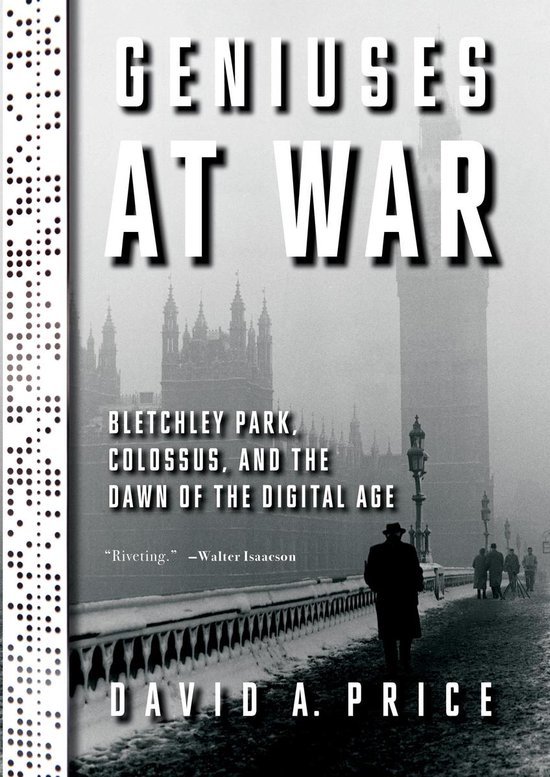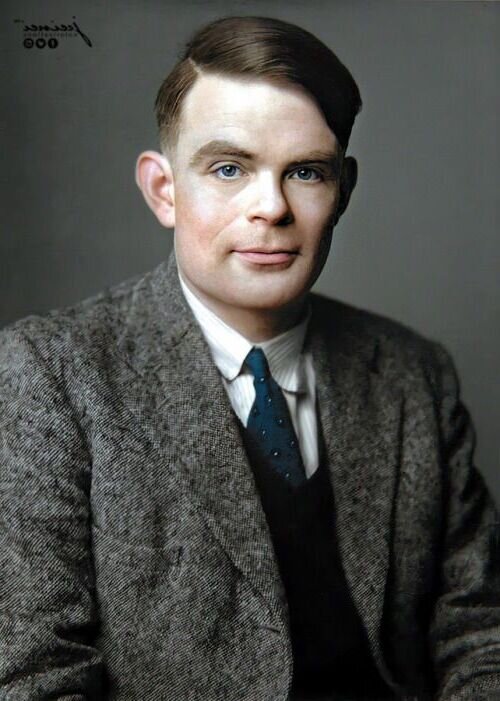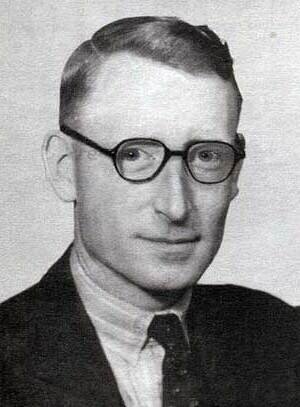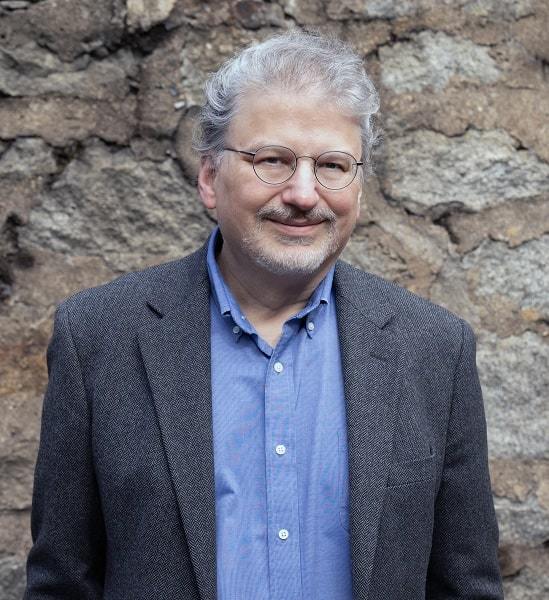
When I searched Amazon for “Bletchley Park books,” 269 entries turned up. I’ve read and reviewed at least a half-dozen of them. But David A. Price’s Geniuses at War surprised me. Most accounts of the World War II British codebreakers at Bletchley Park single out Alan Turing (1912-54) as the central figure in the enterprise and the genius who built the first digital computer. It’s not true. Turing’s Bombe was an analog device. He speculated that a digital computer might be faster and more efficient. But others acted on Turing’s ideas and actually designed and built the machine. It was called Colossus. And David A. Price has written their story in Geniuses at War: Bletchley Park, Colossus, and the Dawn of the Digital Age.
Long-forgotten geniuses
For reasons that are difficult for me to understand, the wartime secrecy imposed by the British and Americans alike kept hidden for many decades much of went on behind the scenes in World War II. Facts about many aspects of the “secret war” involving espionage and signals intelligence are still emerging well into the twenty-first century. And this book is a prime example. David Price teaches us that Alan Turing was far from the only genius at work at Bletchley Park. There were many others. Price tells their remarkable stories here. He brings to light the spectacular but long-forgotten breakthrough in digital computing of the prodigious Tommy Flowers (1905-98) and his colleagues. It turns out that the first digital computer wasn’t ENIAC, which was built in the United States in 1945, but Colossus in 1943-44.
Geniuses at War: Bletchley Park, Colossus, and the Dawn of the Digital Age by David A. Price (2021) 257 pages ★★★★☆

Three extraordinary central characters behind the first digital computer

Price dwells on the work of three men he views as central to the design and construction of Colossus. First was Max Newman (1897-1984), “a mathematical genius from 1940s Central Casting.” He managed the project, which began in 1942. “The second person who was indispensable to the making of Colossus was Turing, who had been Newman’s protégé at Cambridge.” Turing contributed to the breakthrough in two ways. His theory about the practicality of a digital electronic computer pointed the way for Newman. And “he told Newman about Tommy Flowers, a telephone engineer . . . who had impressed him.” But “during the Colossus era, Turing had not been working at Bletchley Park.” He was in the United States.

It was Flowers whose mechanical genius allowed him to design and build the machine, using an approach virtually everyone else told him was impossible. “Flowers didn’t mind being in a minority of one, as he often was.” He headed a team of fifty people but worked closely with only two assistants. Colossus permitted the British to read communications from the German general staff—and even Adolf Hitler himself—to their commanders in the field just hours after having been sent.
Price explores the lives of these three men, both before and after the war, with a light touch and an eye for engaging detail.
Bletchley Park was a massive enterprise
Geniuses at War paints a broad picture of the massive scope of work undertaken at Bletchley Park. It is by no means exclusively about Colossus. “Over the course of the war,” Price writes, “the size of the staff at Bletchley Park would climb to more than 8.700 men and women, working in three shifts and spread across twenty-odd buildings.” So much for the image of a handful of eccentric geniuses laboring away in tight quarters. (That’s an impression you might have gained from The Imitation Game, the 2014 film starring Benedict Cumberbatch as Turing.) The author supplies details about the specialized work undertaken in the many “huts” scattered about the grounds of the estate.
That work involved far more than deciphering the German military codes and ciphers. Many other nations encrypted their messages—and Bletchley Park worked on many of them. He describes the recruitment program that brought such a diverse array of personalities into play together. Price also explains how bureaucratic snafus and personality conflicts frequently got in the way. And he lays out in engaging detail the impact of the work they all accomplished over the six years of the conflict.
The Park helped turn the tide of the war at two crucial junctures
Price’s book is in no way an effort to minimize the contribution of Alan Turing, either to the war effort or to the development of the “thinking machines” he hoped to build. In fact, he credits Turing for helping win the life-or-death Battle of the Atlantic against Germany’s U-boats. “The victory was made possible by a mechanical device, principally of Turing’s invention, known as the Bombe, which mimicked the operation of a series of Enigma machines lashed together.”
But “where Turing’s Bombe was used against the Enigma, Colossus was used against another, much more complex machine, the crown jewel of German encryption technology . . . known to the germans as the Lorenz SZ series . . . and to the Allies by the code name Tunny (British English for ‘tuna’). . . Tunny’s ciphering system was ten trillion trillion trillion trillion trillion trillion trillion trillion trillion times as complex as Enigma’s.” But this first digital computer broke through the cipher, and in the process provided the Allies with strategically pivotal intelligence that played a large role in the success of the Normandy Invasion.
About the author

David A. Price (1961-) is the author of two other nonfiction books, including The Pixar Touch: The Making of a Company, a history of Pixar Animation Studios and computer animation. He received his bachelor’s degree in economics and computer science from the College of William and Mary and graduate degrees from Harvard University and the University of Cambridge. He lives in Richmond, Virginia, his home town.
For more reading
Check out:
- The Emperor’s Codes: The Thrilling Story of the Allied Code Breakers Who Turned the Tide of World War II by Michael Smith (Did the British crack the World War II Japanese codes?)
- The Secret War: Spies, Ciphers, and Guerrillas, 1939-1945 by Max Hastings (A revisionist history of intelligence in World War II)
- Bletchley Park and D-Day: The Untold Story of How the Battle for Normandy Was Won by David Kenyon (How Bletchley Park helped the Allies win on D-Day)
You might also enjoy:
- 30 good nonfiction books about espionage
- 10 top nonfiction books about World War II
- 30 good books about artificial intelligence
- 10 best books about innovation
And you can always find my most popular reviews, and the most recent ones, on the Home Page.


























